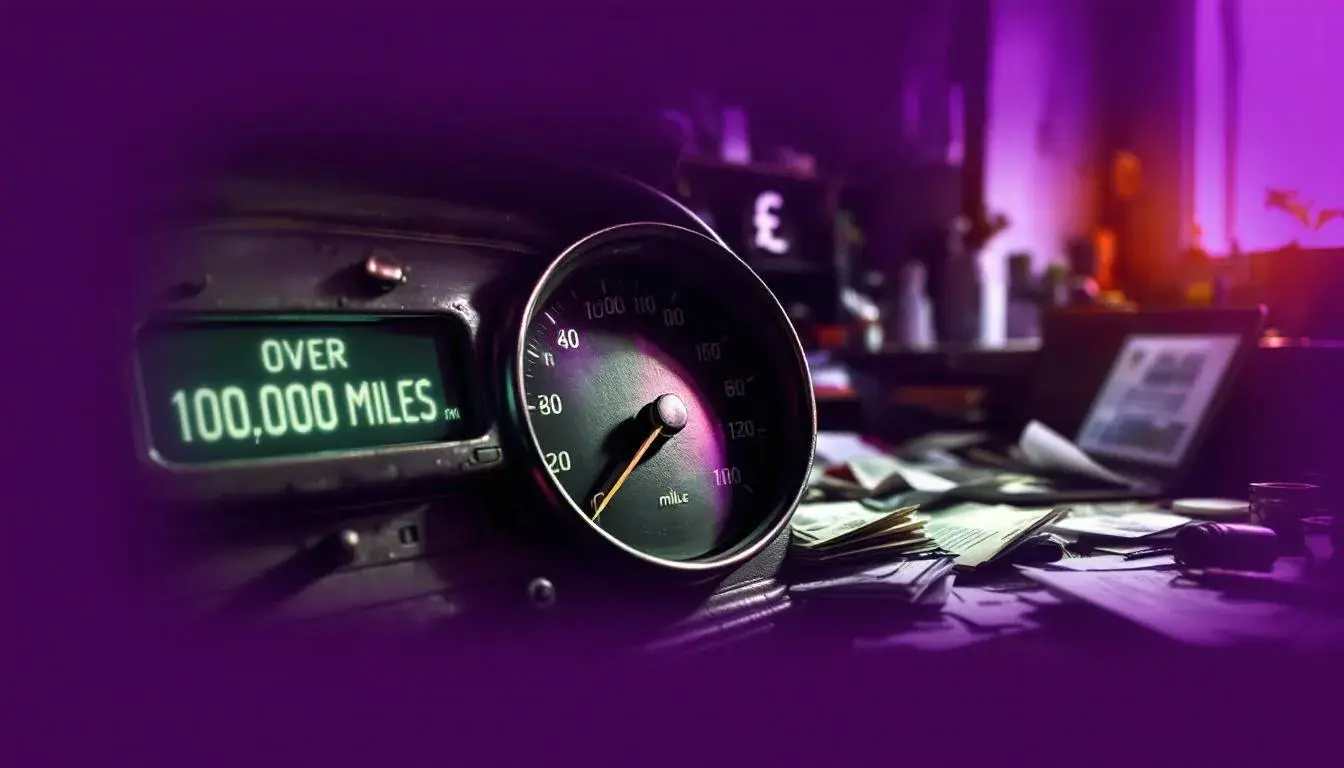
Finance Options for Uber: What UK Drivers Need to Know

Why This Guide Matters
Choosing the right vehicle finance option is crucial for Uber drivers in the UK. Your car isn’t just a means of transport—it’s your business asset. With the rise of ride-hailing, many drivers are considering finance solutions to access newer, more reliable vehicles without hefty upfront costs. The wrong decision, however, can eat into your earnings, restrict your flexibility, or lock you into unsuitable terms. This guide aims to provide clarity so you can make an informed choice tailored to your needs and earning goals. Whether you’re just starting or looking to upgrade, understanding your finance options will help you avoid common pitfalls and maximise your returns on the road.
The Basics Explained
When it comes to financing a vehicle for Uber work, there are several key options:
Personal Contract Purchase (PCP): Pay a deposit, make monthly payments, and have the option to buy the car at the end or hand it back.
Hire Purchase (HP): Pay a deposit and fixed monthly payments until the car is yours at the end of the term.
Personal Loans: Borrow a lump sum to buy the car outright, then repay the loan over time.
Lease (Personal Contract Hire): Rent the car for a fixed term and return it at the end—no option to buy.
Specialist Uber Finance Schemes: Some providers offer tailored packages for ride-hailing drivers, occasionally including insurance and servicing.
Each option has its own eligibility criteria, upfront costs, and ongoing commitments. For Uber drivers, factors like mileage limits, insurance requirements, and vehicle age restrictions set by Uber are particularly important to consider when choosing a finance product.
How It Affects You
The finance route you choose will directly impact your monthly outgoings, your flexibility to change vehicles, and even your profitability. For example, PCP and lease agreements usually have annual mileage limits—often 10,000 to 30,000 miles. Exceeding these limits can result in steep charges, a notable issue given the high-mileage nature of Uber work. HP or personal loans may give you more freedom, as you’ll own the car at the end, but they often require larger deposits and higher monthly payments.
Uber’s own vehicle requirements—such as age limits and emissions standards—also play a role. If your finance plan ties you to a car for several years, you risk being left with a vehicle that no longer qualifies for Uber’s platform, especially as cities like London tighten regulations.
Insurance is another consideration; some finance products require fully comprehensive cover, which can be more expensive for professional drivers. Maintenance and servicing responsibilities also vary, impacting your total cost of ownership. Understanding these factors ensures you select a finance solution that aligns with your business model and aspirations.
Our Approach
At Kandoo, we believe in making vehicle finance transparent and accessible for all Uber drivers. Our role as a broker is to connect you with a range of lenders and products that suit your specific circumstances—whether you’re new to ride-hailing or an experienced driver looking to expand your fleet.
We start by assessing your financial profile and Uber driving history. This helps us identify products you’re likely to be approved for, saving you time and avoiding unnecessary credit checks. We explain each finance type in plain English, outlining:
Total cost over the agreement
Deposit and monthly payment amounts
Mileage restrictions and excess charges
End-of-term options and obligations
Insurance and servicing requirements
We also work with lenders who understand the unique needs of ride-hailing drivers, including higher annual mileage allowances and flexible upgrade options. Our advisers help you factor in all costs, from insurance to maintenance, so you get a realistic view of your earnings after expenses.
In addition, we keep up to date with the latest Uber requirements and city-specific regulations. This means we can help you avoid the risk of financing a vehicle that could become ineligible for Uber work. Ultimately, our approach is about giving you control and confidence—so you can make the best decision for your business.
Before You Decide
Before signing a finance agreement, there are critical checks every Uber driver should make:
Uber’s vehicle eligibility: Confirm the make, model, age, and emissions standards meet Uber’s requirements in your city.
Mileage needs: Assess your expected annual mileage—choose a finance product that accommodates this to avoid excess charges.
Total cost: Look beyond the monthly payment. Factor in deposits, fees, insurance, servicing, and end-of-term costs.
Flexibility: Consider how easy it is to exit or change vehicles if your circumstances change or Uber’s requirements are updated.
Ownership: Decide whether you want to own the car at the end or simply use it for a set period.
It’s also wise to read all terms and conditions carefully. Ask about penalties for early termination, late payments, or exceeding mileage limits. If you’re unsure, seek advice from a broker who understands the Uber market.
What’s Real, What’s Hype
The internet is full of bold promises about ‘zero-deposit’ or ‘guaranteed approval’ finance for Uber drivers. While some deals are genuine, many come with strings attached—higher interest rates, restrictive terms, or hidden fees.
Be cautious of any offer that seems too good to be true. Reputable brokers and lenders will always be transparent about costs and eligibility. Remember: your goal is to maximise earnings, not tie yourself to an unsustainable agreement.
Pros & Cons
| Finance Option | Pros | Cons |
|---|---|---|
| PCP | Lower monthly payments, flexible end | Mileage limits, no guaranteed ownership |
| HP | Own the car, no mileage limits | Higher payments, larger deposit |
| Lease/Contract Hire | No ownership risk, new cars | Return car, mileage limits, no equity |
| Personal Loan | Own car outright, flexible use | Credit risk, higher upfront cost |
| Uber-specific Schemes | Tailored, may include extras | May cost more overall, limited options |
Other Options to Consider
If traditional finance isn’t right for you, consider these alternatives:
Rental schemes: Some companies offer weekly car rentals specifically for Uber drivers. Maintenance and insurance may be included, so you avoid long-term commitments.
Car subscription services: Pay a fixed monthly fee for a car, usually including insurance and servicing. Subscriptions can be paused or changed with relatively short notice.
Used or nearly-new vehicles: Buying outright, either with savings or a smaller loan, can reduce upfront costs and avoid depreciation associated with new cars.
Pooling resources: Some drivers share vehicle ownership or costs, splitting shifts and expenses. This can work with clear agreements and compatible schedules.
Each alternative has trade-offs in terms of flexibility, cost, and eligibility. Consider your long-term business plans and risk appetite before choosing.
FAQs
Can I get car finance if I have a poor credit history?
It is possible, though you may face higher interest rates or need a larger deposit. Specialist lenders may be more flexible, especially if you can show consistent Uber earnings.
Do finance agreements include insurance?
Most standard finance products do not include insurance. Some Uber-specific packages or subscriptions may offer it as an add-on, but it’s crucial to check.
What happens if I exceed the mileage limit?
Exceeding the agreed mileage on PCP or lease agreements can result in excess charges, usually calculated per mile. Always estimate your mileage realistically and negotiate if possible.
Will I own the car at the end of the agreement?
Only hire purchase and personal loans guarantee ownership, provided all payments are made. PCP gives you the option to buy, whereas leases do not.
Can I use any car for Uber?
No. Uber has strict criteria regarding car age, condition, and emissions. Always check the latest requirements for your city before committing to finance.
Is it better to lease or buy for Uber work?
It depends on your financial situation, expected mileage, and long-term business plans. Ownership gives flexibility and potential long-term savings, while leasing or PCP may suit those seeking lower upfront costs and newer vehicles.
Next Steps
Before choosing a finance option, review your Uber driving goals and budget. Compare offers, read the terms carefully, and don’t hesitate to seek advice from a reputable broker like Kandoo. The right finance choice can boost your earnings and peace of mind—so take your time, ask questions, and invest wisely in your driving future.
Buy now, pay monthly
Buy now, pay monthly
Some of our incredible partners
Our partners have consistently achieved outstanding results. The numbers speak volumes. Be one of them!


douglas hall kennels

Pristine Glazing










